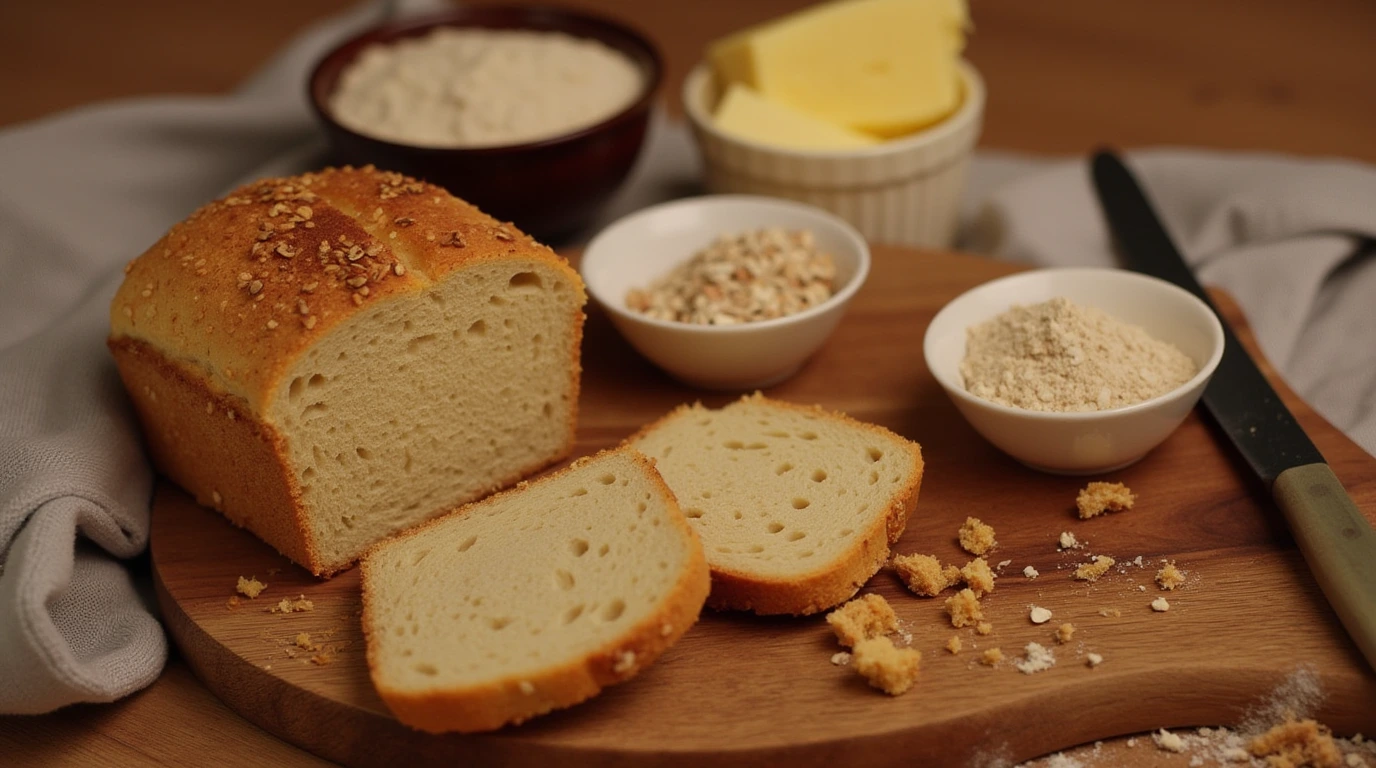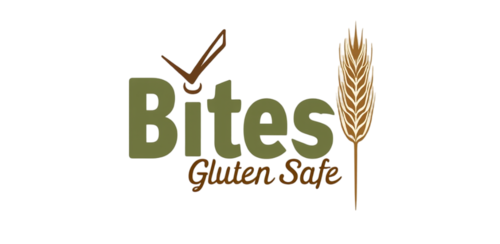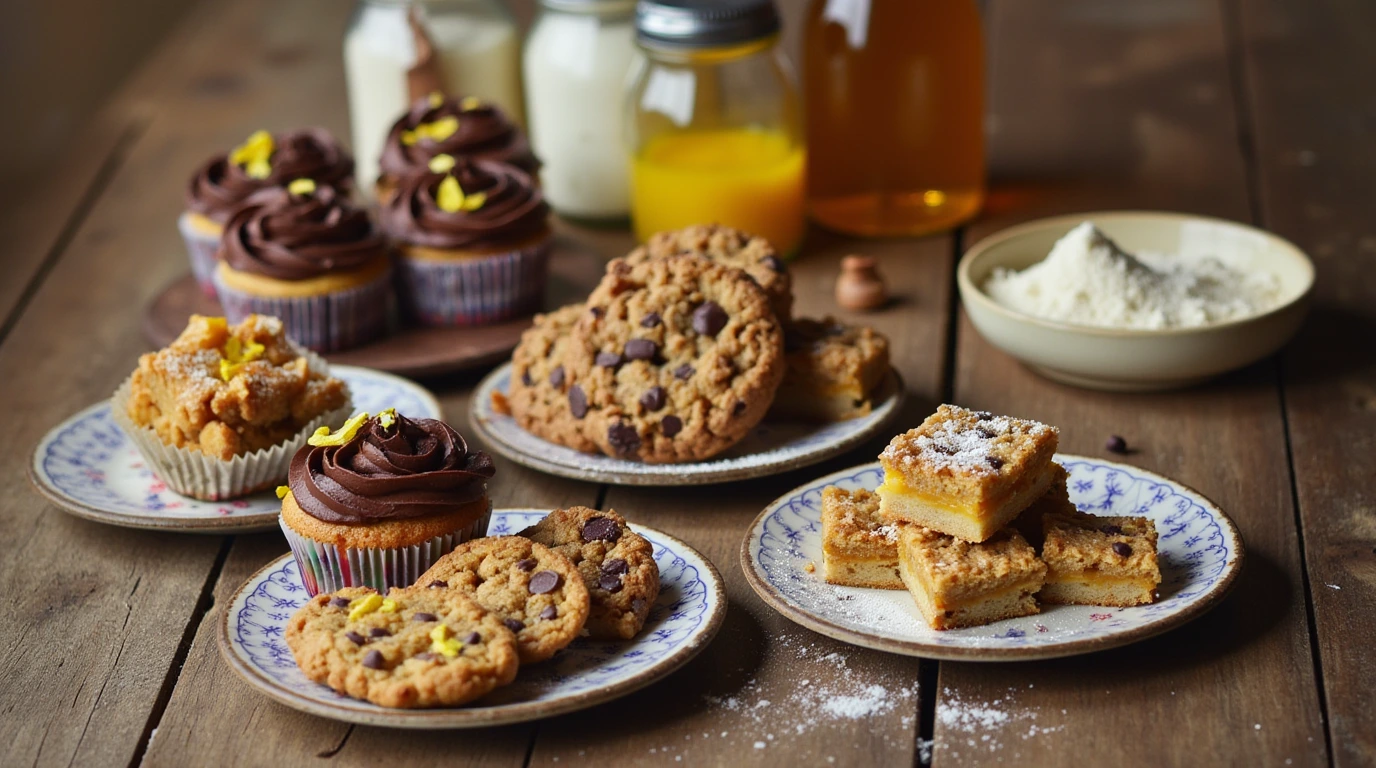Gluten free baking offers an exciting world of delicious possibilities, whether you’re catering to dietary restrictions or exploring healthier baking options. This guide breaks down essential tips, techniques, and recipes to help you master the art of gluten free baking.
For more inspiration, learn about whether baking powder is gluten free and how it impacts your recipes, or pair your baked goods with this gluten free garlic bread for a savory side.
Understanding Gluten Free Baking
What Is Gluten?
- Gluten is a protein in wheat, barley, and rye, responsible for elasticity and structure in baked goods.
- People with gluten intolerance or celiac disease must avoid gluten to prevent health issues.
Challenges of Gluten Free Baking
- Gluten free flours lack the elasticity of wheat flour, often requiring binders and adjustments.
- Balancing moisture and texture is critical for successful gluten free baking.
Key Ingredients for Gluten Free Baking
Gluten Free Flours

- Almond Flour: Adds moisture and a nutty flavor.
- Coconut Flour: Highly absorbent; adjust liquids accordingly.
- Oat Flour: Offers a hearty texture and is perfect for cookies and breads.
Binders and Leaveners
- Xanthan Gum or Guar Gum: Essential for binding and structure.
- Eggs: Provide structure and leavening.
- Flax or Chia Seeds: Vegan alternatives for eggs.
Sweeteners and Enhancers
- Natural sweeteners like honey or maple syrup.
- Spices such as cinnamon, nutmeg, and vanilla extract for added flavor.
For more specific recipes, try this delightful gluten free cornbread to see how these elements come together perfectly.
More Tools and Techniques for Gluten Free Baking
Expanding your gluten free baking toolkit and mastering advanced techniques can significantly improve your results. Here are additional tools and tips to take your baking to the next level.
Essential Tools
- Silicone Baking Mats
- Prevent sticking and ensure even baking.
- Perfect for cookies, pastries, and breads.
- Dough Scraper
- Helps manage sticky gluten free doughs.
- Ideal for shaping bread and cleaning work surfaces.
- Pastry Blender
- Useful for cutting butter into gluten free flour.
- Essential for making pie crusts, biscuits, and scones.
- Oven Thermometer
- Ensures accurate oven temperature, which is crucial for gluten free recipes.
- Helps avoid overbaking or underbaking.
- Loaf Pans with High Sides
- Provide support for rising gluten free breads that lack the elasticity of gluten.
Advanced Baking Tips
- Temperature Matters
- Use room temperature ingredients for even mixing.
- Cold eggs or butter can lead to uneven textures.
- Don’t Skip the Binders
- Gluten free flours need binders like xanthan gum or psyllium husk for structure and elasticity.
- Use the recommended amount to avoid crumbly results.
- Hydration is Key
- Gluten free flours absorb more liquid. Letting the batter rest for 10–15 minutes allows the flours to hydrate fully, preventing dryness.
- Layer Flavors
- Add depth to your recipes with extracts (vanilla, almond) or spices (cinnamon, nutmeg, cardamom).
- Balancing sweetness with a touch of salt enhances the overall flavor.
- Rotate Baking Trays
- For even cooking, rotate trays halfway through baking.
- This is especially important for cookies and smaller baked goods.
- Steam for Bread
- Place a pan of water in the oven when baking bread to create steam.
- This helps achieve a crusty exterior while keeping the inside soft and moist.
Experimentation Techniques
- Combine Flours
- Mixing almond, rice, and tapioca flours can create a better texture than using a single flour.
- Test Small Batches
- If trying new flour combinations or substitutions, test with a small batch before committing to the entire recipe.
- Use a Trial and Error Approach
- Adjust liquid ratios, cooking times, and binder amounts to suit your unique recipe needs.
More Gluten Free Recipes You Must Try
Take your gluten free baking journey to the next level with these additional recipes that cater to every taste and occasion. From breads and desserts to savory delights, there’s something for everyone!
Breads

- Gluten Free Garlic Bread
- Crispy on the outside and soft on the inside, perfect for pairing with soups or pasta.
- Made with a blend of almond flour and tapioca starch for a chewy texture.
- Pumpkin Spice Bread
- A fall-inspired favorite packed with warm spices like cinnamon and nutmeg.
- Perfect as a breakfast option or a dessert with a dollop of whipped cream.
- Banana Bread
- Moist and naturally sweetened with ripe bananas.
- Add walnuts or chocolate chips for an extra indulgence.
Desserts
- Gluten Free Lemon Bars
- Tangy lemon curd on a buttery almond flour crust.
- Ideal for spring and summer gatherings.
- Peanut Butter Blondies
- Rich and chewy bars made with almond flour and natural peanut butter.
- A delicious alternative to traditional brownies.
- Gluten Free Apple Pie
- A classic dessert with a flaky gluten free crust and spiced apple filling.
- Serve with vanilla ice cream for the perfect finish.
Savory Bakes
- Gluten Free Biscuits
- Fluffy and tender, these biscuits are perfect with butter or gravy.
- Made with a blend of almond and rice flours for a soft texture.
- Spinach and Feta Muffins
- A savory, protein-packed option perfect for breakfast or snacks.
- Use fresh spinach and crumbled feta cheese for a rich flavor.
- Cheese Breadsticks
- Made with tapioca starch and mozzarella cheese, these breadsticks are stretchy and satisfying.
- Perfect as an appetizer or a side dish for soups.
Breakfast and Snacks
- Sweet Potato Muffins
- Moist and flavorful muffins with a hint of cinnamon.
- Naturally sweet and a great grab-and-go snack.
- Gluten Free Granola Bars
- Packed with oats, nuts, and dried fruits, these bars are perfect for busy mornings.
- Drizzle with chocolate for a touch of indulgence.
- Chocolate Chip Pancakes
- Light and fluffy pancakes studded with chocolate chips.
- Serve with maple syrup or fresh berries for a delicious breakfast.
For more savory options, try the ever-versatile gluten free potato pancakes, which make an excellent side dish or main course for a hearty meal.
These recipes will expand your repertoire and make gluten free baking an exciting and rewarding experience for you and your family!
Storing Gluten Free Baked Goods
- At Room Temperature: Store in airtight containers for up to 3 days.
- Refrigeration: Extends shelf life up to a week.
- Freezing: Freeze individual portions for convenience.
More FAQs About Gluten Free Baking
Here are additional frequently asked questions to address common concerns and improve your gluten free baking skills:
1. Can I Make Gluten Free Baking Keto-Friendly?
Yes, by using low-carb flours like almond or coconut flour.
- Replace high-carb flours with almond or coconut flour, adjusting liquid ratios to account for their absorbency.
- Use natural sweeteners like erythritol, stevia, or monk fruit.
2. Why Are My Gluten Free Breads Dense?
Gluten free bread can become dense if:
- The batter is too dry; add a bit more liquid to create a softer dough.
- You skip the resting time, which allows the batter to hydrate fully.
- You don’t use a binder like xanthan gum or psyllium husk for structure.
3. Can I Make Gluten Free Baking Nut-Free?
Yes! Substitute nut-based flours (like almond flour) with:
- Sunflower seed flour: A great nut-free option with a similar texture to almond flour.
- Gluten free oat flour: Adds a hearty flavor without nuts.
4. How Do I Store Gluten Free Flours?
- Keep flours in airtight containers to prevent moisture contamination.
- Store in a cool, dry place or in the refrigerator for extended freshness.
5. What Are Some Egg-Free Options for Gluten Free Baking?
- Flax Eggs: Mix 1 tablespoon ground flaxseed with 2.5 tablespoons water; let sit for 5 minutes.
- Chia Seeds: Mix 1 tablespoon chia seeds with 3 tablespoons water; let gel before use.
- Unsweetened Applesauce: Use ¼ cup as a substitute for one egg in cakes or muffins.
6. Can I Substitute Gluten Free Flours in Any Recipe?
Not always. Gluten free flours behave differently than wheat flour.
- Use recipes designed for gluten free baking or experiment with small batches.
- For all-purpose flour recipes, a gluten free all-purpose blend with xanthan gum works best.
7. Why Don’t Gluten Free Cakes Rise Properly?
This can happen if:
- Your baking powder or soda is expired.
- The batter is overmixed, reducing air bubbles.
- The oven temperature isn’t consistent; use an oven thermometer to ensure accuracy.
8. How Can I Make My Gluten Free Cookies Chewy?
- Add more moisture with ingredients like brown sugar or honey.
- Use a combination of flours for better texture, like oat flour with almond flour.
- Slightly underbake the cookies and allow them to cool on the baking sheet for a chewy finish.
9. What’s the Best Way to Freeze Gluten Free Baked Goods?
- Allow baked goods to cool completely.
- Wrap them individually in plastic wrap or place in freezer-safe bags.
- Thaw at room temperature or reheat in a 350°F oven for a fresh-baked feel.
10. Can Gluten Free Flour Be Used for Thickening Sauces?
Yes, gluten free flours like tapioca flour, arrowroot powder, and cornstarch work well as thickeners.
- Mix with cold water before adding to hot liquids to prevent clumping.
Conclusion
Mastering gluten free baking recipes unlocks a world of delicious treats for every occasion. By understanding the basics, experimenting with essential ingredients, and exploring a variety of recipes, you can create baked goods that are as satisfying as traditional ones.
For even more inspiration, try this gluten free almond flour coffee cake or explore the versatility of gluten free granola to complement your baking journey!

